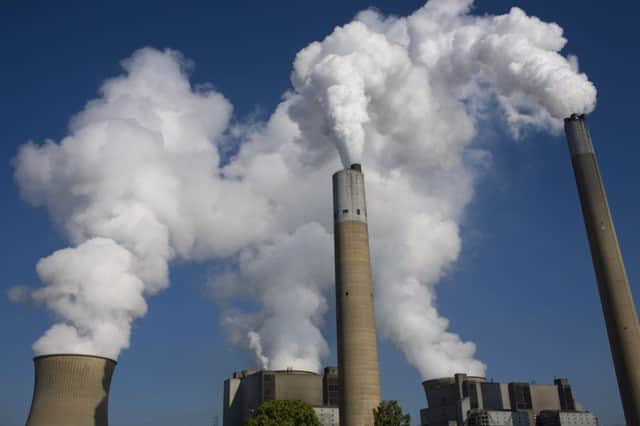Scottish Government publish green heating plan


Scottish ministers say the country’s heat system should be largely decarbonised by 2050 in an effort to battle climate change.
This can be achieved through increasing efficiency and using energy generated from renewable sources, they say.
Advertisement
Hide AdAdvertisement
Hide AdThe proposals have been laid out in the government’s new heat policy statement, which has been published just days after it was revealed Scotland failed to achieve its own annual greenhouse gas emissions target for the fourth year in a row.
Environmentalists welcomed the new policy statement, which designates energy-efficiency as a national infrastructure priority.
“Reducing our dependence on volatile fossil fuels to heat our homes is a huge opportunity to cut bills, lift people out of fuel poverty, enhance energy security and cut emissions,” said Dr Sam Gardner, head of policy at environmental campaign group WWF Scotland.
“It’s good to see the Scottish Government prioritising energy-efficiency as the ‘first fuel’ with its commitment to establish a national infrastructure priority.
“That commitment needs to be matched with clear goals, milestones and a strong funding package if it is to deliver the benefits it promises.”
Heat is estimated to account for more than half of Scotland’s total energy use and is responsible for nearly half of the nation’s greenhouse gas emissions.
In order to meet Scotland’s world-leading emission reduction goals, installations will increasingly need to have a minimal carbon footprint.
The statement details measures to supply heat efficiently and at the lowest cost to consumers, as well as renewable and low-carbon sources.
Advertisement
Hide AdAdvertisement
Hide AdThe government stated it aim to ”work together with energy experts, businesses and communities to develop a more holistic approach to these issues over the next year”.
Niall Stuart, chief executive of industry body Scottish Renewables, warned the process of change would be “long, difficult and complex”.
He said: “Heating our homes and businesses accounts for more than half of Scotland’s energy use, and most of our carbon emissions.
“We need to totally change the way we produce heat if we are going to get anywhere near our climate change targets, and that is going to be a long, difficult and complex transition.
“Heating is also the main element of our energy bills and the key driver of fuel poverty, so there are many ways in which change here can benefit the country.”
He emphasised there would be “huge challenges” ahead but said members were looking forward to helping “kick-start Scotland’s transition to low-carbon heat”.
Energy minister Fergus Ewing said: “This concise heat policy statement sets out the Scottish Government’s framework for achieving a resilient heat system which transitions to affordable low-carbon heat and seizes the economic opportunities that this transformation offers.”
Government analysis indicates that heat equipment and energy-efficiency improvements worth more than £100 billion will be replaced or installed between 2010 and 2050.
Advertisement
Hide AdAdvertisement
Hide AdThe heat policy designates energy-efficiency as a national infrastructure priority.
As part of this, the Energy Efficiency Programme will provide support to all buildings in Scotland to improve their green rating.
Start-up infrastructure projects will be given project development support under the Low Carbon Infrastructure Transition Programme, launched in March this year.
Local authorities will also get support to develop a “strategic approach to district heating”, which can provide heat to homes and businesses more cheaply and efficiently.
The policy also retains the target to have 40,000 homes connected to district or communal heating by 2020.